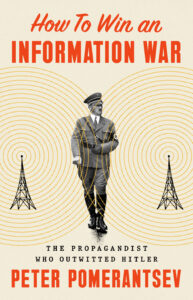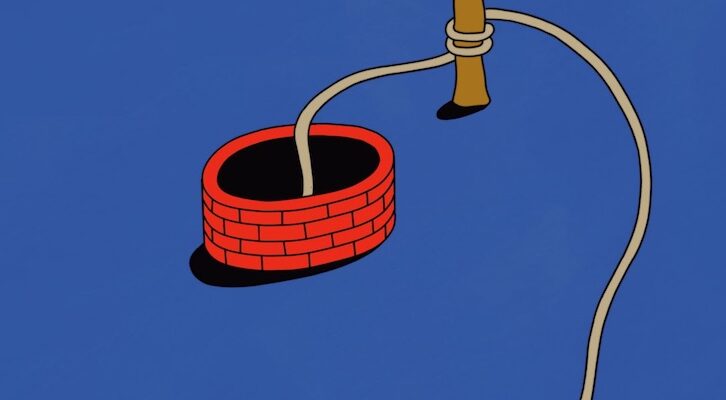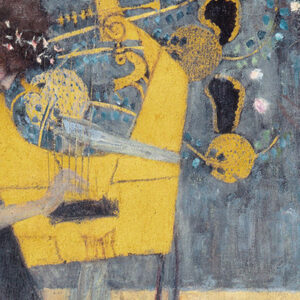As D-Day approached, German soldiers, sailors, and airmen who liked to smoke self-rolled cigarettes would have felt themselves most fortunate to pick up a free pack of Efka cigarette papers, with their familiar drawings of palm trees and pyramids, that someone had left behind on a café table or on the seat on a train, or to discover a pack they had completely forgotten about buried deep in the pockets of their greatcoats. But when they opened them, instead of the expected fifty cigarette papers, they found ten tightly folded sheets of thin paper. On opening these sheets, the members of the Wehrmacht found excerpts from a manual titled Krankheit rettet (Illness Saves), authored by a certain “Dr. Wohltat” (Dr. Do Good). Flicking through them, they would glimpse an introductory letter from the good doctor, followed by instructions and delicate drawings of various plants— just printing these intricate drawings on such thin and tightly folded paper was already a feat in itself. Someone had clearly taken great care in the production of whatever Krankheit rettet was. And what did this paradoxical title mean? How can illness save?
The man behind Dr. Do Good was Professor John T. MacCurdy of Corpus Christi College, Cambridge. MacCurdy dressed in a long black coat with a lion’s-head clasp, which he rarely took off. Delmer called him “MB’s very own Witch Doctor. A wise one-eyed Canadian.” He would visit Delmer and his team weekly at Woburn, guiding one of the PWE’s most sustained projects to undermine Goebbels’s propaganda of glorious death and to encourage German soldiers to abandon their missions.
A psychiatrist who had been an early, if skeptical, part of the psychoanalytical movement, MacCurdy taught courses like “Dreams and the Unconscious” and “Theory and Practice of Psychoanalysis” at Cambridge. Since World War I he had researched the mental states of soldiers.
He advanced the view that there were two principal wishes involved in what he labeled “war neuroses”: “the wish for death and the wish for a wound. . . . Those who suffer from anxiety states have wished for death during the period of strain and fatigue preceding the final collapse . . . or for some disabling illness.”
Some soldiers yearned for death to relieve the stress of war in an honorable way or to rid themselves of the burden of responsibility of commanding fellow soldiers; others wished to save themselves with an injury that would get them sent home from the front. At Woburn, the challenge for MacCurdy was to stimulate the desire to abscond from the fighting and downplay the desire to sacrifice yourself for a greater cause. But that meant working out what could make death attractive in the first place.
Ideas about the attraction of death were being debated among psychoanalysts at the time. “There is an age-old conviction,” explains Josh Cohen, “important to religious, national, and other affiliations that to believe in an entity means readiness to die for it, as though it only becomes real at the moment you’re ready to sacrifice yourself to it. It endows death with meaning, and to the true believer, it gives assurance you’ll be remembered. It is a death you choose, that endows the choice with agency. Freud suggested more than once that you could love being in an army or a religion with the same force and energy as loving another individual.”
In Delmer’s memoirs, curiously, he associates such feelings with Ukrainians: indeed it is only when he sees Ukrainians ready to die for their nation that he starts to realize that Ukraine is a “real” country.
In 1939 he was reporting from western Ukraine as it was seized by Nazi- backed Hungarians when he saw a group of Ukrainian partisans who had been captured: “A gang of prisoners were marched down the main street carrying a heavy log on their shoulders. For the first time I really believed there was such a thing as the Ukraine. Seconds later I saw them shot, all six of them, one after the other. They went down in a shrieking, sobbing, kicking tangle, still chained to the log.” In the 1930s, as in the 2020s, Ukrainians were seen as emblematic of people dying so that their cause might live.
“But there’s another way psychoanalysts at the time looked at death in war,” says Cohen. “Not death for a greater cause, but death for the sake of death, and murder for the sake of murder.” After having witnessed the self- destructive horrors of World War I, Freud concluded that “thanatos,” the death drive, was as powerful as the “love drive” of “eros.” In Beyond the Pleasure Principle he related Thanatos to a desire to dissolve oneself back into a state before all the responsibility and burden of being oneself: “An urge inherent in organic life to restore an earlier state of things which the living entity has been obliged to abandon . . . the expression of the inertia inherent in organic life.”
“But as this drive was self-destructive,” Cohen explained, “Freud believed it bumped up against a desire to live and was then turned outward into aggression: we kill others so as not to kill ourselves. It bred a condition where passivity was interspersed with spurts of aggression.”
MacCurdy had been early in spotting how the focus on death for the sake of death was becoming an ever greater part of Nazi propaganda.
In an analysis of a Hitler speech from April 1942, MacCurdy observed that Hitler had lost the belief that he could enter a state of “shamanic” ecstasy and transmit “truth.” Instead of leading the nation on a journey to glory, Hitler now dwelt on his death as a sacrifice in the struggle against the ultimate evil: Jewry. “The notion of a great military victory had passed into the background while he poses more as a martyr, the speech ending on the theme of his death.” Hitler was embracing “the dying god myth.”
In the debates MacCurdy was steeped in, death propaganda offered two attractions: the “positive” seduction of dying for a greater cause; and the darker desire to surrender your will to live and just dissolve into nothingness. Any plan to undermine the allure of the Nazis’ appeal to sacrifice had, first of all, to position itself as part of a positive collective mission, had to be somehow a part of your duty to your fellow Germans; second, it had to restore your sense of being able to act and overcome the desire to just sink into passive acceptance of your demise. A PWE strategy document put the challenge bluntly: “A lust for self immolation is not infrequent among Germans. While it may lead to a willingness to fight on to a Nibelungen end it should not be impossible to divert this urge to an acceptance of surrender as a great self-sacrificing and honourable act of patriotism.”
This was the trick Illness Saves tried to put into practice. In the manual German soldiers pulled out of the EFKA packets, Dr. Wohltat explained the dangers of “war strain” that came with years of service, how fatigue built up quietly over the years and was so subtle that doctors could miss it, but it could cause a breakdown at any moment. The doctors’ lack of knowledge about “war strain” was clearly a disaster in waiting for the safety of a military unit during an operation. Indeed, this oversight in medical science meant it was the soldiers’ patriotic duty to fake illness and get sent home or to a hospital from the front.
MacCurdy insisted that “the malingerer must give the physician the impression that here is a patriotic citizen, dedicated to his duty, who has the misfortune to be ill despite himself.” And he must never try to name or define his disease, for that was up to the doctor to do: “One single symptom which the doctor has discovered by his own questions, is worth ten the patient has volunteered.”
The rest of the manual was filled with examples of how to give yourself serious symptoms— without causing lasting damage. For a throat infection, for example, apply silver nitrate on the tonsils and swallow a small amount of gunpowder. Faking TB was harder but effective because there was so much of it about a doctor could easily be convinced you had it. If you were working at a munitions factory, obtain a few drops of dinitrophenol, which is used in the manufacture of explosives. A tiny amount taken every day will cause high temperature and fever. Then tell the doctor you also have blood in your mucus. He will test it for bacilli. To create counterfeit TB bacilli, avoid washing a few days and allow some “cheese” to form beneath your foreskin. Then mix this “cheese” with your mucus and a little blood you draw from out of your finger— and swallow the mixture.
For violent diarrhea, munch on the dried seeds from the corn cockle flower, which grows wild in cornfields. To make sure you could find this and other useful plants, there was a whole appendix of beautifully drawn flora that caused various rashes, lesions, burns, and blisters on the skin. Isabel Delmer drew all the illustrations: “I had to make drawings so accurate there could be no mistake about the plant.”
Dr. Do Good was always spurring you toward action, toward being a sort of theatrical actor on the stage of deception, nudging you away from passively accepting death. For the manual to be credible, it had to actually work. And that meant someone at Woburn had to test all the formulas. For such tasks, Delmer inevitably turned to one man: “Halkett will see to it” had become a commonplace order. “I tried out everything in that book—it was sometimes painful,” Halkett would recall. He didn’t detail whether he tried the formula for faking TB but was certainly upset that Delmer’s memoirs didn’t credit him properly for his work.
For Delmer, these “malingering manuals” had a double purpose: to help soldiers get out from the front lines but also to force German military medics to trust their patients less as they learned about the existence of the manuals. This distrust, in turn, meant that real patients would suffer, and this could increase the enmity between medics and soldiers. Almost everything that Delmer did had a double, often triple, purpose.
The malingering manual would be so successful that the Germans made a copy, translated it— and then directed it across British lines. The concept had, Delmer admitted, boomeranged.
___________________________________





















